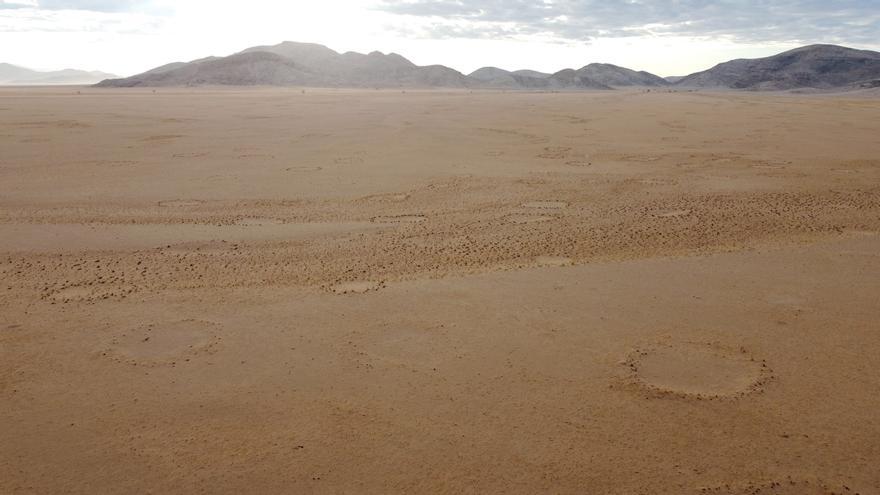
An international team of scientists, with important Spanish participation, has revealed Revealing new data on the mysterious origin of “fairy circles”those rings of vegetation that have been discovered in normally very arid areas around the planet.
In recent years, different scientific hypotheses have arisen about the origin of these “circles”, known in some places as “witch circles” either “footprint of the gods”, and that have been traditionally linked to mythology or legends in different regions of the world.
The PNAS magazine publishes this Monday the conclusions of a research work that has been led by the scientist from the University of Alicante Emilio Guirado, a work in which they have identified up to 263 circles in fifteen countries on three continentswhich constitutes an authentic world “atlas” of these circular formations.
The study reveals global distribution and ecological conditions of the “fairy circles” in arid areas, where they appear with patterns of completely bare soil but surrounded by circular patches of vegetation and which until now had been described in considerable detail in Namibia and Australia.
Now, researchers have used remote sensing images and a neural network-based model to identify possible locations of these circles around the planet and have identified 263 in fifteen countries and on three continents, including Central and Western Asia.
The detailed analysis of these mysterious formations suggested to scientists commonalities in the conditions of all the circles, and among these coincidences they have pointed out arid environments, high temperatures, seasonal rainfall, low nutrient levels in the soil and a high sand content.
Furthermore, termite nests in some regions, such as Namibia, also had a greater relative importance in the distribution of those circles than in other regions, such as Australia.
Areas with these fairy circles also show more stable vegetation productivity than surrounding areas without these formations.
The findings, according to the researchers who carried out the study, could help resolve current debates about the formation mechanisms of these circles, and expand the study of isolated fairy circles to a “global ecological atlas” that allows analyzing the impact of these formations on the stability and resistance of ecosystems.
The researcher from the University of Alicante Emilio Guirado has detailed that There are several hypotheses to explain the formation of fairy circles, from termites to the self-organization of vegetation.
In this study, Guirado explained to EFE, they have discovered new sites where they can be found and have analyzed the importance of other “drivers” of these formations (such as precipitation, the nitrogen content of the soil, the percentage of sand or the presence of termites) in the distribution of circles on a global scale.
“We have shown that a climate with little rainfall, low nitrogen content in the soil, or a high percentage of sand, among others, are the most important drivers to explain why fairy circles are where they are,” said the researcher. .
And it has also corroborated that although on a global scale termites did not have much importance, on a regional scale they did, and they are more important in areas of Namibia than in Australia or the Sahel.
Emilio Guirado has also observed that size and “roundness” are directly related to the aridity indexand that the shape and dimensions of these circles are conditioned by precipitation and potential evotranspiration (evaporation from the soil and from the surface covered by plants and transpiration from plant leaves).
Thus, the scientists They have discovered that the greater the aridity, the size of the fairy circles increases and their shape more closely resembles a perfect circle.
The researcher has pointed out that before this research, this type of circles had already been described in two regions of the world (Namibia and Australia) and now have shown that there are hundreds of places where they can be foundand has cited areas of the Sahel, Western Sahara, Horn of Africa, Madagascar, southwest Asia or central and southwest Australia.